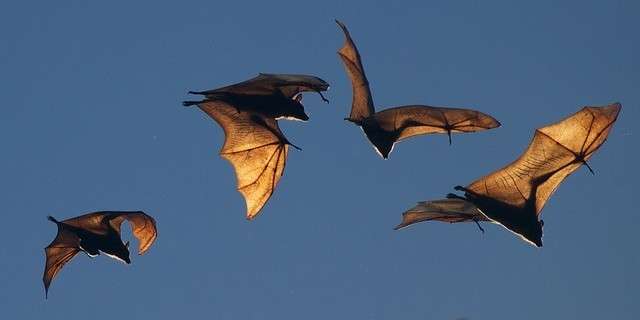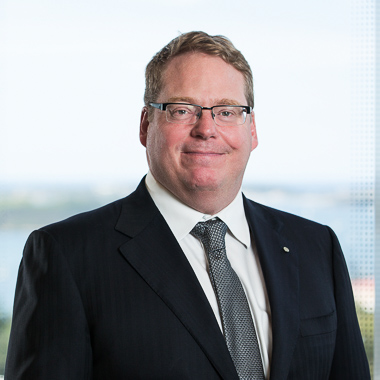
Here we go again. The Federal Government has appointed Blair Comley PSM, “an economist and former special advisor with PwC” as the new Secretary of the Department of Health and Aged Care. As was reported in that announcement, the writer added “there is no escaping the spectre of that consultancy”.
His five-year term commences on 17 July. My concern is that, at a time when the health sector is in turmoil, a person with no experience in health has been appointed. Not that the previous incumbent has left much of a legacy and he was medically qualified, but he did achieve acclaim for his “sure hands” in the face of the COVID-19 outbreak. At least he knew the language – Health. I am one of those who do not subscribe to the notion that once a manager, the language of management overrides everything – no matter the expertise or subject matter.
I have worked my entire career in the health sector and had a business partner who was originally a transport economist and cost accountant, but who gradually developed a fluency in “health”, albeit with an accent and a limited health vocabulary. But he could negotiate his way around in the language and knew when he was being deceived by fancy “med-speak”.
What I find somewhat interesting is that in his curriculum vitae, as published, Mr Comley is vague about his age. I know that some people are sensitive about their age, but it always has a reason. What is Mr Comley’s?
He is impeccably qualified. Comley holds a first-class Honours degree in Economics and is a Master of Economics from Monash University. He holds a Graduate Diploma in Legal Studies from the Australian National University. He spent time in Treasury and three years in the OECD. Comley seems to have attracted the attention of the Labor Party and worked for the Rudd-Gillard Government, first as Secretary of the Department of Climate Change and Energy Efficiency from 2011 and then for a short time at Resources, Energy and Tourism – appointed secretary in February 2013. He was thus well on his way to “Mandarin-hood” before, with two other Department Heads, he was sacked by Abbot on the first day Abbot took over as Prime Minister in September of that year.
It was at this time he moved to PricewaterhouseCoopers as a consultant in April 2014, a special advisor to the company’s Canberra economics and policy team. The then NSW State Premier, Mike Baird, later appointed him as the Secretary of the Department of Premier and Cabinet in 1914, where he lasted for three years before he was off again onto the consultant carousel, this time with Ernst & Young as Director and Partner at EY Port Jackson Partners, a strategy-focused consultancy advising leaders of business and government – in other words – a lobbyist.
In January 2012 Mr Comley was awarded a Public Service Medal for “outstanding public service in the development of public policy, particularly in the areas of carbon pricing and emissions trading, tax policy design and debt management”. But not Health!
“Mr Comley has a wealth of experience and a record of proven leadership navigating complex issues,” Mr Butler said. We’ll see. He still has potential spins on KPMG and Deloitte; to which he may say, “Come back in five years.” I prefer not, but on reflection the Australian Health system has survived the likes of Jane Halton. The problem is that these top health bureaucrats know the streets of Geneva better than those of Alice Springs. So, Mr Comley you certainly have a challenge for someone who is 53 years old (verified from another source).
One obvious question. How would you handle a national public health emergency – say Ebola or some other haemorrhagic contagion, Mr Comley? Whom would you trust?
My Little Orange Lamborghini
One of my favourite film opening sequences is that featured in “The Italian Job”. This was the thriller-comedy featuring Michael Caine and Noel Coward as leaders of a band of robbers intending to steal a large amount of gold bullion in a Turin heist.
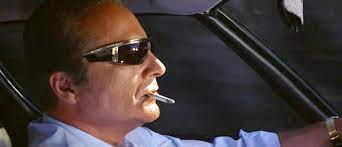 The opening sequence features an orange Lamborghini Miura being driven up the winding Great Bernard Pass. The pass links the Aosta Valley region of north-western Italy and the Canton of Valais in Switzerland. The opening scene features Rossano Brazzi at the wheel, fag in mouth and wearing fashionable sunglasses – Ford Mustang Renauld Spectaculars. The sunglasses were specifically designed for driving, with the curved sides to stop wind coming through.
The opening sequence features an orange Lamborghini Miura being driven up the winding Great Bernard Pass. The pass links the Aosta Valley region of north-western Italy and the Canton of Valais in Switzerland. The opening scene features Rossano Brazzi at the wheel, fag in mouth and wearing fashionable sunglasses – Ford Mustang Renauld Spectaculars. The sunglasses were specifically designed for driving, with the curved sides to stop wind coming through.
Belying the wistful opening song “On a day like today” sung by Matt Monro, the opening scene ends with the Lamborghini crashing into a front end loader hidden in the tunnel and not only that, there is also a shot of the sun glasses lying on the road being ground under a Mafia heel. Such gratuitous destruction, but as the publicists of the film said, the Miura tipped over the mountainside had already been destroyed in a previous accident in the Middle East – where else?
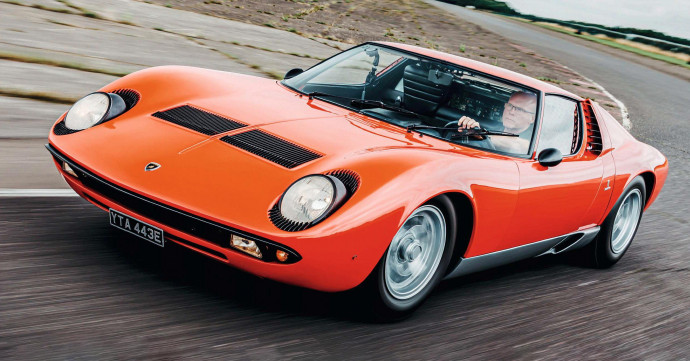 Oh, what a relief. I must say the fuss surrounding this car, with its numbered chassis #3586, was surprisingly lost for 50 years after its appearance in the 1969 film. When the car reappeared, it needed restoration and now resides with its owner in Liechtenstein, with a value of about US$5m.
Oh, what a relief. I must say the fuss surrounding this car, with its numbered chassis #3586, was surprisingly lost for 50 years after its appearance in the 1969 film. When the car reappeared, it needed restoration and now resides with its owner in Liechtenstein, with a value of about US$5m.
It was the first supercar with a rear mid-engine and two-seat layout, something which other supercars have followed as a mantra ever since. Introduced in 1966, the Miura remained in production until 1973. In different forms a total of 764 were manufactured. All came powered by the 3.9-liter V12 although Lamborghini could coax out different power from different versions of the car. It was also the fastest production car of its time. While Fiat is synonymous with Turin; Lamborghini are manufactured in a small town near Bologna – Sant’Agata Bolognese – in Emilio-Romana.
I sound like a Top Gear presenter. I must stop this adulation. Yet I do remember staying in London next to a Lamborghini dealer, with these low-slung cars spilling out into the narrow street during the day seemingly immune from parking tickets. Watching them being driven hither and yon, it seemed by those driving these vehicles you needed training as a contortionist – all seemed to be athletic young men replete with what the French call “quincaillerie”.
Likewise, the signature sunglasses have been revived, available online for around AUD2,100.
Brazzi’s cameo appearance must be akin to the brief appearance of Janet Leigh in just surviving the opening credits of “Psycho”.
Yes, Turin is an impressive city, being the capital of Piedmont and once the seat of the Savoyard royalty. Thus, it has the air of a city of typical oppressive majesty, with the long colonnaded shopping centres where you can drink coffee, quaff a white Piedmontese wine and eat agnolotti while watching the Torinese walk past. However, more spectacular was sipping Negronis on the roof of the gardens with an admittedly interrupted view of the Alps, clinging to the far horizon as a spectacular backdrop to the intervening city buildings.
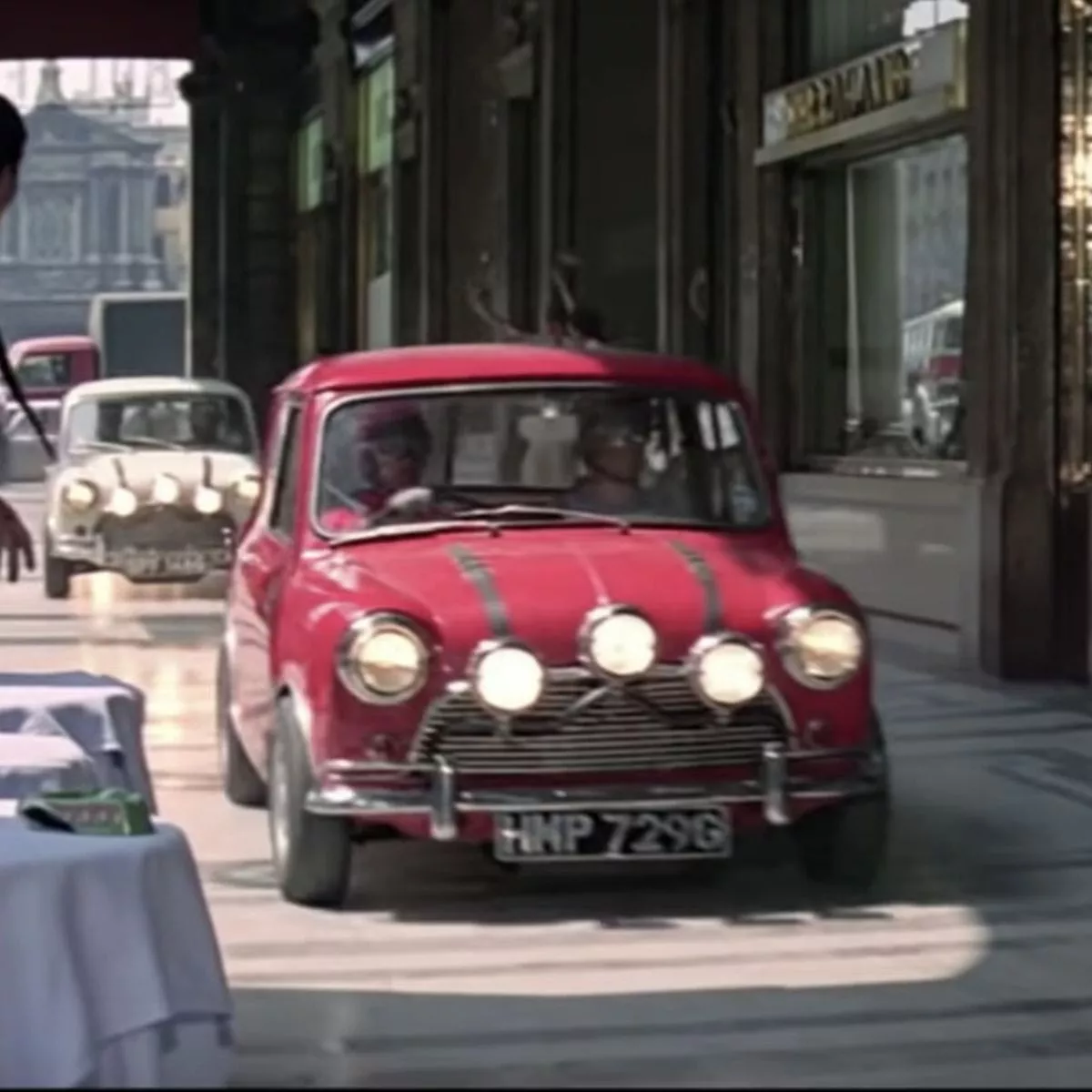 Turin is a sedate city, not the frenetic scene in what was a very entertaining film, and there is no doubt that Turin is one of those Northern Italian cities which is known, at least for a long time, by the Mini Cooper car chase through its streets, the colonnades perfect for the car stunts. The classic pursuit through the sewers was not actually filmed in Turin but in England. Obviously in the traffic gridlock scenes, the Torinese seemed to be enjoying themselves; but even if you paid me, I would not have been one of that crowd. I totally unspool if caught in traffic jams, let alone that crazy gridlock with a crescendo of car horns as depicted in the film.
Turin is a sedate city, not the frenetic scene in what was a very entertaining film, and there is no doubt that Turin is one of those Northern Italian cities which is known, at least for a long time, by the Mini Cooper car chase through its streets, the colonnades perfect for the car stunts. The classic pursuit through the sewers was not actually filmed in Turin but in England. Obviously in the traffic gridlock scenes, the Torinese seemed to be enjoying themselves; but even if you paid me, I would not have been one of that crowd. I totally unspool if caught in traffic jams, let alone that crazy gridlock with a crescendo of car horns as depicted in the film.
The most disappointing aspect of Turin is the acclaimed Shroud. We admittedly arrived late at the Cathedral of St John the Baptist, and there it was, a piece of linen cloth with its head of a bearded bloke, very much the conventional depiction of Christ as an emaciated hollowed soul. We could not really get near it, and the fact that it is behind layers of bullet proof glass does not help either. I consoled myself that at least I had seen it but then what had I seen? The remains of a mediaeval hair shirt cut into the shape of a linen shroud – and why shroud? That is somewhat pejorative to say the least. Could just have been the forerunner of those T-shirts with Che Guevara’s image printed on the front.
Pyne for the Asking
Reading this hard-headed article about the French Defence forces, which appeared in a recent issue of The Economist, inter alia it made me compare the French determination with the apparent waywardness of our defence forces, the procurement of materials seemingly left to an array of consultants linked to US defence contractors, but without any apparent expertise in the field. Being Minister for Defence in Australia seems however to be a prerequisite for growing mushrooms; the experience of being one being invaluable in what will ever be known as your Pynestry. If one thinks about Pyne, that grinning visage profiting from just being an average politician, a guy who had never had a real job before entering Parliament at the age of 25. Now one must not be envious! After all, maybe Maurie Pyne will live long enough to receive his appropriate reward, once the AUKUS shill is properly exposed.
Meanwhile, the French have got on with the job. The lesson being very simple is to have a co-ordinated Defence Force with modern communications, just in time – not at a time decades hence when Planet Earth may be a charred remnant, with the Barrow-on-Furness submarine facility long since decommissioned without building any nuclear submarines for us.
Paradoxically, however, France has scaled back the acquisition of some extra kit. The air force will get 48 fewer new Rafale fighter jets than previously planned, and 15 fewer a400m transport aircraft; the army will get 497 fewer Griffon and Jaguar armoured vehicles. “Because we are trying to do everything at the same time, we are sprinkling rather than defining priorities,” said Hélène Conway-Mouret, a Socialist senator on the armed-forces committee.
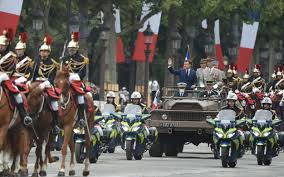
The new budget, retorts the general, “takes us in the right direction”, even if its full effects will not be felt until 2030. He argues that critics of the plan have failed to understand the importance of capable forces rather than sizeable ones. The number of tanks, ships and planes is not growing as fast as it might, he insists, precisely because of the priority given to “coherence”. “It’s important that if you buy a tank, you have men trained on it, who have ammunition to train and spare parts to go in the field with it.” There is no point, General Burkhard says, in having “an army that is ready to parade on Bastille Day, but is not ready to go to war.”
Vancouver
I note that Vancouver is listed as the sixth most liveable city and, given the subjective nature of such assessments, where both Sydney and Melbourne are listed above in The Economist tabulation, I nevertheless would not argue. In fact one afternoon in Vancouver I defined my experience as the closest I had ever had for ultimate “bliss” – sitting outside in the summer sun consuming a meal of Coho salmon.
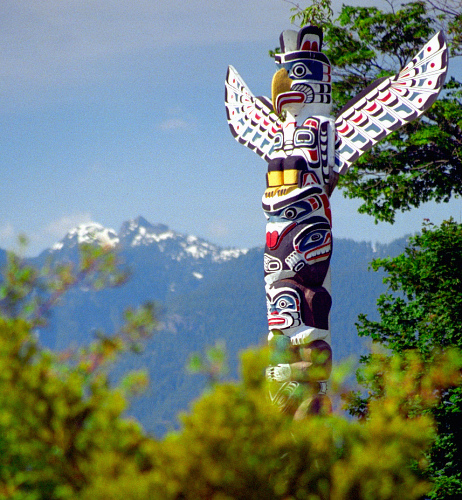
Vancouver has Stanley Park, the large parkland which abuts the harbour, and from where it is a jogger’s delight, running long the seawall, past a collection of the long totem poles characteristic of the Indian tribes of the Pacific North-west. One sight which remains is that of being there in April, when the cherry blossoms were in full flower, their generous pink blooms adding to the beauty that was then Canada.
There are always small moments that stick in one’s memory. I stopped after a wind sprint just outside a bower, where a young woman was sitting. I had turned away, when she asked me to take her photograph. As I turned around she had stood up and was offering me her camera. I thought what a strange request to ask a total stranger to take a photograph – just of herself. I complied; she thanked me and went back to her seat; I ran off and never saw her again. Given that the iPhone has made the “selfie” an integral part of normal social interchange, with the capacity to store any scrap of life seemingly almost unlimited, it is one of the examples of social mores trailing the technology. So different from when I had taken that photo perhaps forty years ago.
Now the picture of Canada (see below) is that of forest fires, of drought, waterways and dams dried up. Over the years, I have been to all the border provinces of Canada, except Saskatchewan. I once spent twelve hours at Calgary airport, waiting for a delayed plane and thus left to have a lot of time to become acquainted with the collection of artifacts hung on its walls at that time.

That was the time I took the train from Vancouver to Banff, thence to Calgary where I was to visit the Foothills Medical Centre. This was at a time when I was supposed to be an expert in quality assurance and had just started the first journal, The Australian Clinical Review, which gave me a brief period of international acknowledgement, including for the then CEO of this large hospital.
Of course, I stayed at the Railway Hotel in Banff, one of the faux-chateaux mixed with a touch of the Balmoral, which were built along the Canadian Pacific Railway, looking impressive against the background of snow covered mountains. Staying in hotels like this is very dependent on the room you can afford, but when young and the hotel is relatively affordable, one chases the experience. And I must say I have always gone for the experience – and North America has many of these Grand Hotels, some of which have been renovated or, as was the case when I was in Banff, in the process of renovation.
Now who was Vancouver, his name given to this sixth most liveable World city, and to the nearby Island where the Provincial capital, Victoria is located.
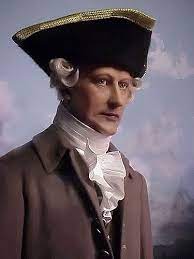
George Vancouver is associated with exploration of the Pacific Nor-West. He was born nearly thirty years after Cook and served as midshipman and junior officer on some of Cook’s voyages. Vancouver was later asked to chart that coast and also drive the Spanish potential conquistadors from the area. He was successful enough to earn the acclaim and hence much being named after him. Ironically the sister city of Portland across the Columbia River in Washington state is named after him, but he failed to detect either the Columbia or Frasier River, something I doubt the meticulous Cook would have missed. As a piece of trivia, there is a freshwater lake near Albany in Western Australia named for him. In 1791, Captain George Vancouver, on his way to America, came to the southern shore of Western Australia, named King George Sound ensuring that all the Australian continent remained British. Where he landed, he saw nothing he thought of any consequence, and after a short stay sailed eastward intending to hug the coastline, but was foiled by the wind shifts. He would not be the last sea salt to believe there was nothing here in Australia.
Cactus on Uluru?
As an Arrernte woman who watched the Labor party apologise for the policies which led to the stolen generations only to deny compensation, or who saw them continue the Northern Territory intervention under another name and demonise entire communities with their “rivers of grog” claims, my trust is gone. – Celeste Liddle in The Guardian
It is not often I change my mind in mid-blog to delay one of my blogs, but Monday this week provided a couple of blows to the campaign to achieve a “yes” vote. I would not say it was exactly cactus, but it certainly needs to be changed radically.
The first salvo came from George Brandis. Now George is one of those conservative Queensland lawyers, once perhaps a form of social liberal but who long since has blotted his copybook with the smudges of entitlement, such is his love of huge bookcases funded by the taxpayer and a comfortable residence in the middle of London, again at our expense. I was surprised to find myself mostly agreeing with his opinion piece in the SMH, setting out seven reasons that the referendum will fail. Apart from insulting the people telling them that they dumb red-necks if as individuals they do not vote yes, with the attendant “moral bullying”, the proponents of the “yes” vote as Brandis wrote: … need to remember it’s not about personalities … The public will see right through cute attempts to make this a popularity contest … They know it is a serious proposal for important constitutional change and expect it to be treated accordingly – not as a political Punch and Judy show.
Here I do question Brandis. Advocacy depends on personalities, but if you choose the wrong advocates then you will surely lose. As testimony to that, Megan Davis is wheeled out in Australian Story as one of the front line academics to prosecute the “Yes” case. Her mother is white; her father who has long since decamped, was an Aboriginal fettler. He is notably absent and it is clear that Megan grew up in a whitefella world, where her mother, a high school teacher, was her guiding spirit.
In her 2010 bio, Megan Davis spends time identifying her Aboriginal blood lines while admitting to South Sea Islander heritage. In the recognition of Aboriginality, it is ironic the heritage of the group descendent from the kanakas “press-ganged” predominantly from the then New Hebrides to work the Queensland sugar cane fields is largely ignored by the other indigenous groups. The biggest population live around Mackay and have their own identity including a flag.
But what is revealing is that despite her heritage, how little time she has spent as an Aboriginal woman. She has grown up as a white woman, who has used her Aboriginality as a means of developing her career, not as one who knows anything about the diversity which is both the strength and the curse of the Aboriginal race. In the Australian Story panegyric, her only link seems to be Uluru through the declaratory Statement, and the fiction that Uluru is the natural heart of the Nation. Why Uluru? Why not Mount Augustus or Mount Wudina or Carnarvon Gorge or the Mitchell Plateau?
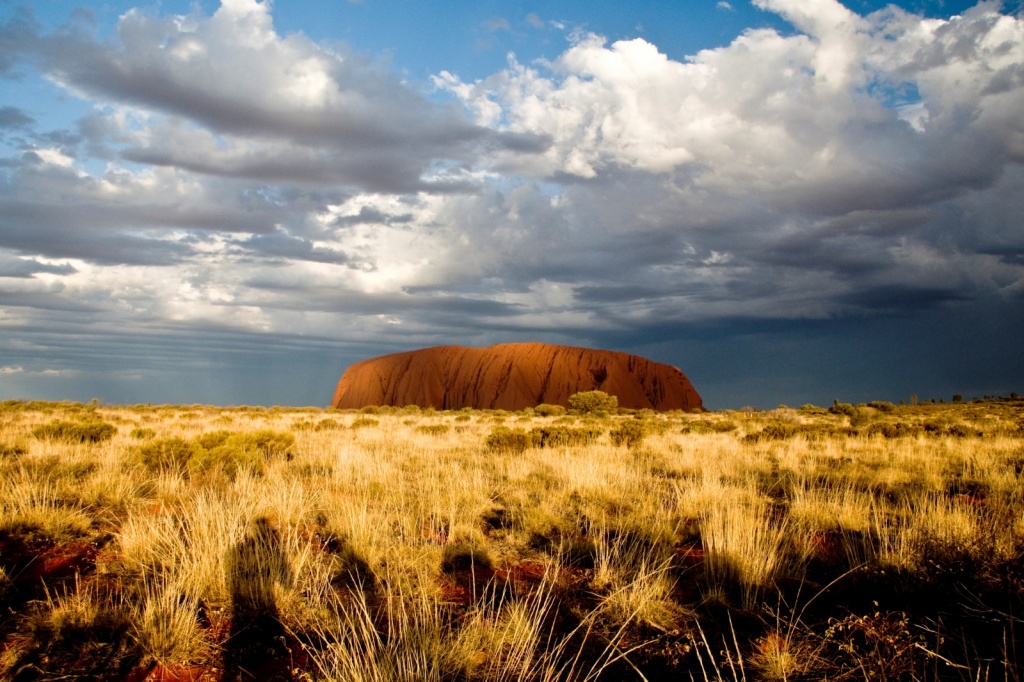 After all, Uluru is not her Land. It is Anangu, but conveniently a tourist resort able to be isolated in beautiful photographic layouts. It is also where the Southern skies can be visualised with minimal light pollution.
After all, Uluru is not her Land. It is Anangu, but conveniently a tourist resort able to be isolated in beautiful photographic layouts. It is also where the Southern skies can be visualised with minimal light pollution.
In Australian Story, it was revealed that she since the age of 12 has walked around carrying a copy of The Australian Constitution. If she was not an Aboriginal person of importance, I would have thought how weird.
Then I read that early CV (sic) in her own write: We grew up mostly in Hervey Bay … I went to school at Star of the Sea, Hervey Bay and St Josephs Tobruk Memorial school in Beenleigh for primary school and then Trinity College, Beenleigh for secondary school. I studied a Bachelor of Arts and Law at the University of Queensland, where I majored in Australian History. For those three years, I lived on campus at Duchesne College, which was the women’s Catholic residential college in St Lucia. During my penultimate year of Law, I started research for the Principal Legal Officer at the Foundation for Aboriginal Islander Research Action (‘FAIRA’) in Brisbane. It was there that I started doing research into the international legal regime, looking specifically at the intellectual property rights of Indigenous peoples. Immediately after law school I was accepted into the United Nations Fellowship in Geneva. In fact, I sat my tax and evidence law exams in Geneva not long after I arrived.
As I watched her parading through Australian Story, this woman since 2010 the recipient of more academic kudos, it is clear that the strategy is to promote women with Aboriginal Heritage, women who have been loaded with academic gowning, part of an urban elite with a theoretical grasp of Aboriginal affairs. In the half an hour Australian Story journey with this strangely passive woman who loves an accusatory oratory platform, I thought why is she being given this platform. Why promote her? She does not seem to connect with the wider Aboriginal diaspora. As Brandis has noted, the whole debate has lost transparency.
Thus, Uluru which seems to be the only Indigenous handle that Davis plus her apparently tight relationship with the genuine Aboriginal activist, Pat Anderson, makes me wonder who is driving the “Yes” case. I wish the motives of those are understandable – or as Brandis has called it a need for “transparency”.
Mouse Whisper
Overheard outside the Mouse residence. Our mouse had one of his friends over for cheese and crackers.
Resident mouse: In English it is a bat, pure and simple, but for the Germanic and Nordic languages, the bat is translated as variations of “flying mouse”. In the Romantic languages, only the French choose to insult us further by calling a bat – “a bald mouse”. Really, even the Romanians, the natural home of the bat the Romanian word for bat is liliac which gave rise to that famous Dracula Song – “I’ll gather liliacs”.
Joking aside, it was the Romans who had the best word for “bat” – “vespertilio”, they having observed that bats come out in the evening, but we mice do not fly, I bet you have never heard of a saying – “like a mouse flying out of hell” or “having flying mice in the belfry”.
Visiting Mouse: Sorry, mate, I know you are very clever, a polymouse indeed! Yet, there is another word in English for bat. It Is uncommon, but it is there – flittermouse. You can put it into your Whisper, my flying mouse mate. But you can’t silence it.
